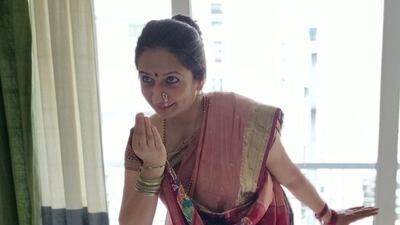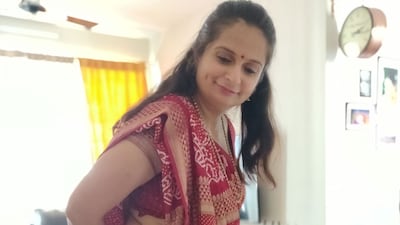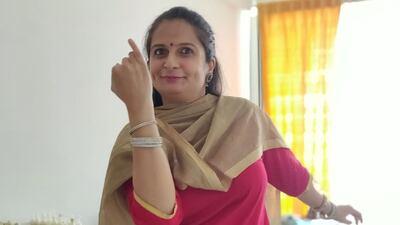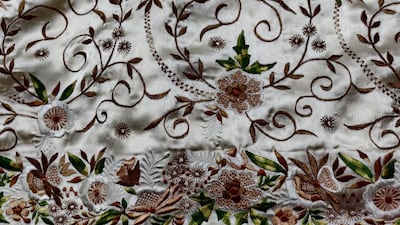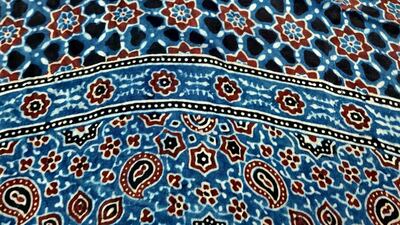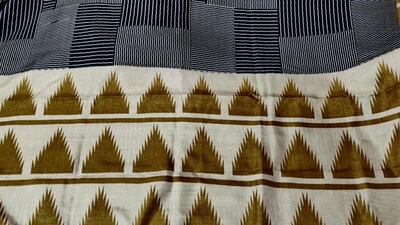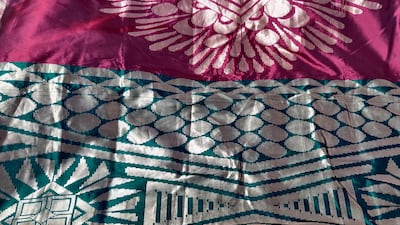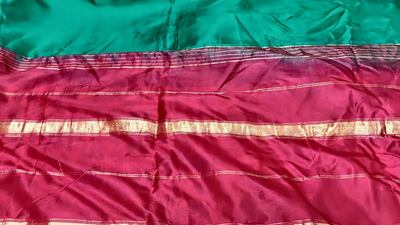India's coronavirus lockdowns – among the strictest around the world – have had millions confined to their homes, with curfews continuing to this day. residents from Mumbai, one of the country's most densely populated cities, are having a particularly hard time.
Stuck indoors, often in tiny apartments, with two or three generations under one roof, many have desperately looked for ways to cope. While some found comfort in the kitchen, with quarantine baking and cooking, Riddhi Doshi turned to dancing.
Dance and Textile
"There's a certain joy in moving your body to a beat," she says. "Even more so when your movements and clothes complement each other." It is this thought process that gave birth to her Dance & Textile Project on Instagram. It started in the thick of lockdown last April, and became an instant mood-lifter. Foot-tapping beats aside, Doshi, 37, also uses the platform as a means to promote Indian weaves through her attire.
A writer by profession, Doshi has been training in Gujarati folk dance – dandiya and garba – since the age of 4. Over the years she has also dabbled in belly dancing, jive and salsa, and is currently training in classical dance style kathak. She hopes to obtain a certificate in it from Akhil Bhartiya Gandharva Mahavidyalaya Mandal, a dance and music institution in Pune, which started in 1931.
However, it was the challenges wrought upon weavers during the pandemic that led her to launching the project. With most traditional weaving communities falling under the unorganised sector, there was no real funding that could cushion the economic blow to the community. So she turned to her wardrobe, a veritable treasure trunk of saris and other regional Indian ensembles. "I had about 10 different types of weaves that I had carefully collected over the years," says Doshi, who would often save up for months to buy an intricately woven sari.
Bollywood beats
Doshi launched her project wrapped in the traditional dress of the Indian state of Mizoram, the Mizo puan, and dancing to Hoton Mein Aisi Baat from yesteryear hit Bollywood movie Jewel Thief, starring 1960s heart-throb Dev Anand and Vyjayanthimala.
As I go through Doshi's videos what strikes me are the subtle similarities between dance and weaving. The fluidity in her moves take me back to a visit to a handloom centre in Varanasi and the rhythmic sound of its textiles. Look closely at her sari as she moves, and you can almost see the geometry that goes into the making. Let your imagination run wild and an embroidered border may remind you of a musical score.
But the Dance & Textile Project is more than simply visual art. Doshi also uses inlaid text in her videos, through which she shares little-known facts about the weaves. "As I wrote about textiles, I often had to interview people who owned several handwoven saris, but I found very few knew the details behind them," she says.
Fabric of society
Through her project, you can also learn some interesting origin stories and myths, for example, there are paintings that can be traced to the Mughal era that show emperor Jahangir sporting chikankari embroidery. And that the patola – a fully reversible design that requires the weavers to be expert mathematicians – usually finds its way to the Gujarati bridal trousseau, owing to the belief that this reversible design wards off evil. And the simple yet elegant Ilkal saris get their name from the town of Ilkal in the southern Indian state of Karnataka, where this form of weaving emerged in the 8th century.
Mohe Rang Do Laal from the film Bajirao Mastani, wearing a flowing ajrakh-print skirt. This style of weave can be traced to the Harappan Civilisation. In another clip she performs Bollywood's much-loved thumkas (hip shakes) sporting a gorgeous blue-and-silver patola sari. This style of weave can be traced to Gujarat.
Doshi has started a Textile & Memories series as part of her initiative, too, where women can share recollections associated with their clothes. Next Doshi is looking at delving into the individual stories of craftsmen. Her video on Kutchi wool has already caught the eye of an employee at Sony Entertainment.
“They reached out to me on my Instagram handle asking me to put them in touch with Pabi ben Rabari, who I had mentioned in the video,” Doshi says.
Rabari who once struggled to earn even a rupee a day, as she transported water from the well in her little village of Bhadroi in Kutch, began her textile journey by creating embroidered bags and now has her own line of accessories. Through Sony, she went on to star in the Amitabh Bachchan-hosted Kaun Banega Crorepati (India's version of Who Wants to be a Millionaire?).
Doshi's project, then, has enormous potential to aid artisans, revive weaving styles and provide a spot of light relief in these dark days of the pandemic.
